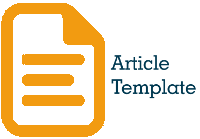APPLICATION OF FORWARD CHAINING TO IDENTIFY THE NEGATIVE IMPACT OF ONLINE GAME ADDICTION ON MENTAL HEALT AND ADOLESCENT BEHAVIOR
DOI:
https://doi.org/10.35457/antivirus.v16i2.2459Keywords:
Online Games, Mental Health, Conduct Disorder, Forward Chaining, Expert SystemAbstract
The development of increasingly sophisticated technology provides changes in the form of human activity, one of which is the type of game. With the advent of audio-visual games that can be accessed via the internet. Known by the name of online games. Playing online games with a high level of intensity can have a positive or negative impact. The risk of dependence that can arise from online game addiction can cause mental health problems and behavioral changes that can occur in adolescents. So it is necessary to identify based on the habit of playing online games in adolescents. From solving these problems, an expert system was created to see whether the habits of playing online games by teenagers affected their mental health and behavior. The forward chaining method is used for the inference engine on the expert system to process data from interviews with experts in the field of psychology, there are 17 symptoms in the form of addiction disorders based on aspects of health, psychological, academic, social and financial aspects. Based on the results of the analysis, expert system testing was carried out using verification and validation tests by testing the rules compiled based on the forward chaining method as many as 39 data, the verification test produced results that matched the rules compiled with the results from expert experts and the system validation test resulted in a percentage of 94 %. So based on the research that has been done, the forward chaining method can be used in determining the diagnosis of the negative impact of online game addiction on mental health and adolescent behavior.
Downloads
References
W. N. Amirah and Z. H. Ramadan, “Analisis Dampak Negatif Kecanduan Game Online Free Fire Pada Siswa Kelas III SD,” 2021.
T. W. Utami and A. Hodikoh, “Kecanduan Game Online Berhubungan dengan Penyesuaian Sosial pada Remaja,” J. Keperawatan, vol. 12, no. 1, pp. 17–22, 2020.
I. Akil, “Analisa Efektifitas Metode Forward Chaining Dan,” J. Pilar Nusa Mandiri, vol. 13, no. 1, pp. 35–42, 2017.
W. E. Sari, E. Maria, and R. K. Santoso, “Deteksi Penyakit Dan Hama Tanaman Pepaya Menggunakan Metode Forward Chaining dan Best First Search,” JOINTECS (Journal Inf. Technol. Comput. Sci., vol. 5, no. 3, p. 185, 2020, doi: 10.31328/jointecs.v5i3.1483.
Edwin and Humdiana, “Aplikasi Untuk Mendiagnosis Kecanduan Internet Terhadap Mahasiswa / I Perguruan Tinggi Berbasis Web Dengan,” 2019.
A. Kurniawan, Sumijan, and J. Na’am, “Sistem Pakar Identifikasi Modalitas Belajar Siswa Menggunakan Metode Forward Chaining,” J. RESTI (Rekayasa Sist. dan Teknol. Informasi), vol. 3, no. 3, pp. 518–523, 2019, doi: 10.29207/resti.v3i3.1166.
S. Sagara and A. M. Masykur, “Gambaran Online Gamer,” Empati, vol. 7, no. 2, pp. 418–424, 2018.
S. Erik and W. V. Syenshie, “Hubungan Durasi Bermain Game Online Dengan Kesehatan Mental Pada Remaja Pria,” J. Ilm. Kesehat. Jiwa, vol. 2, no. 2, pp. 69–75, 2020.
N. Arthini, “Keterampilan Menyikat Gigi Sebelum dan Sesudah Penyuluhan Kesehatan Gigi dan Mulut di Kecamatan Mengwi Kabupaten Badung,” Politek. Kesehat. Denpasar, vol. 53, no. 9, pp. 1689–1699, 2019, [Online]. Available: http://repository.poltekkes-denpasar.ac.id/1861/.
U. Mawaddah and M. Fauzi, “SISTEM PENDUKUNG KEPUTUSAN UNTUK MENENTUKAN DOSIS OBAT PADA ANAK MENGGUNAKAN METODE FORWARD CHAINING (Studi Kasus Di Klinik Dokter Umum Karanggayam - Srengat),” Antivirus J. Ilm. Tek. Inform., vol. 12, no. 1, pp. 1–10, 2018, doi: 10.35457/antivirus.v12i1.440.
C. P. C. Munaiseche, G. C. Rorimpandey, T. Informatika, F. Teknik, and U. N. Manado, “Penerapan Metode Basis Path Analysis dalam Pengujian White Box Sistem Pakar,” pp. 124–128.
I. R. Yansyah and S. Sumijan, “Sistem Pakar Metode Forward Chaining untuk Mengukur Keparahan Penyakit Gigi dan Mulut,” J. Sistim Inf. dan Teknol., vol. 3, pp. 41–47, 2021, doi: 10.37034/jsisfotek.v3i2.42.
Downloads
Published
Issue
Section
License
Authors who publish with this journal agree to the following terms:
- Copyright on any article is retained by the author(s).
- Author grant the journal, right of first publication with the work simultaneously licensed under a Creative Commons Attribution License that allows others to share the work with an acknowledgement of the work’s authorship and initial publication in this journal.
- Authors are able to enter into separate, additional contractual arrangements for the non-exclusive distribution of the journal’s published version of the work (e.g., post it to an institutional repository or publish it in a book), with an acknowledgement of its initial publication in this journal.
- Authors are permitted and encouraged to post their work online (e.g., in institutional repositories or on their website) prior to and during the submission process, as it can lead to productive exchanges, as well as earlier and greater citation of published work.
- The article and any associated published material is distributed under the Creative Commons Attribution-ShareAlike 4.0 International License











